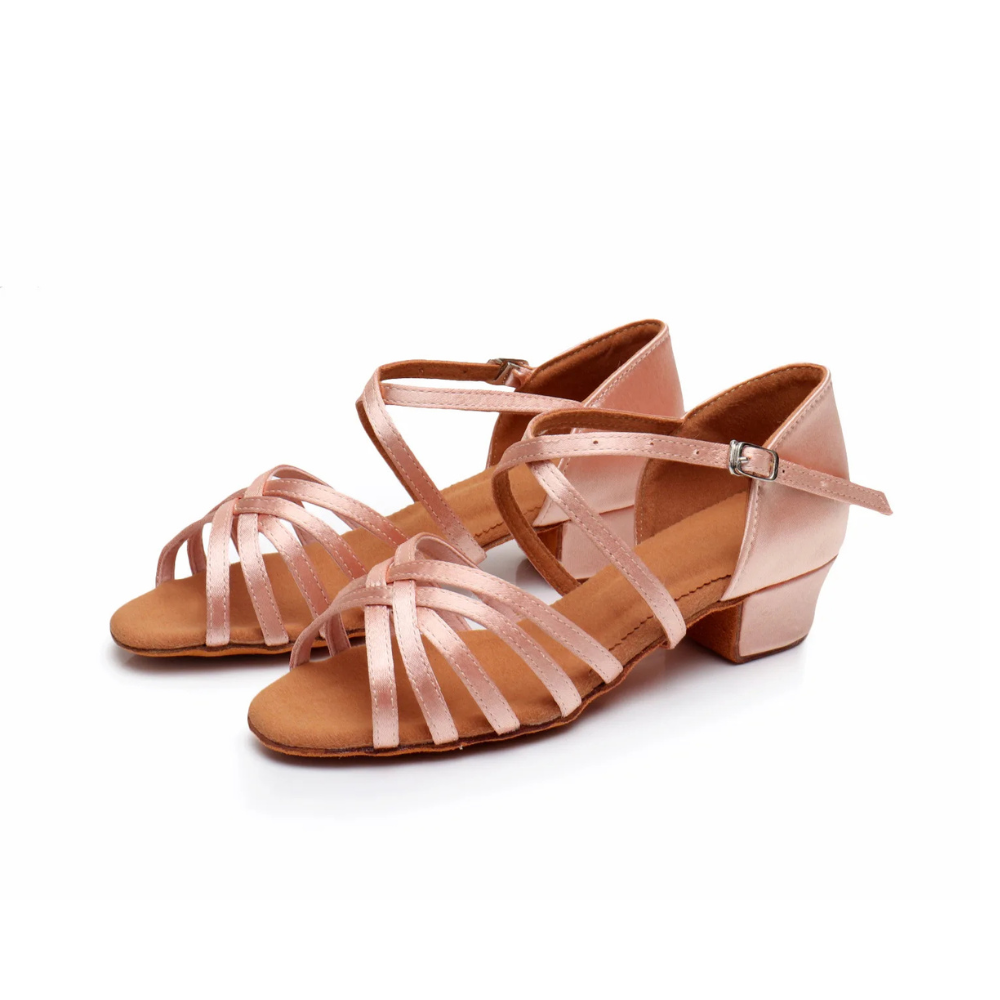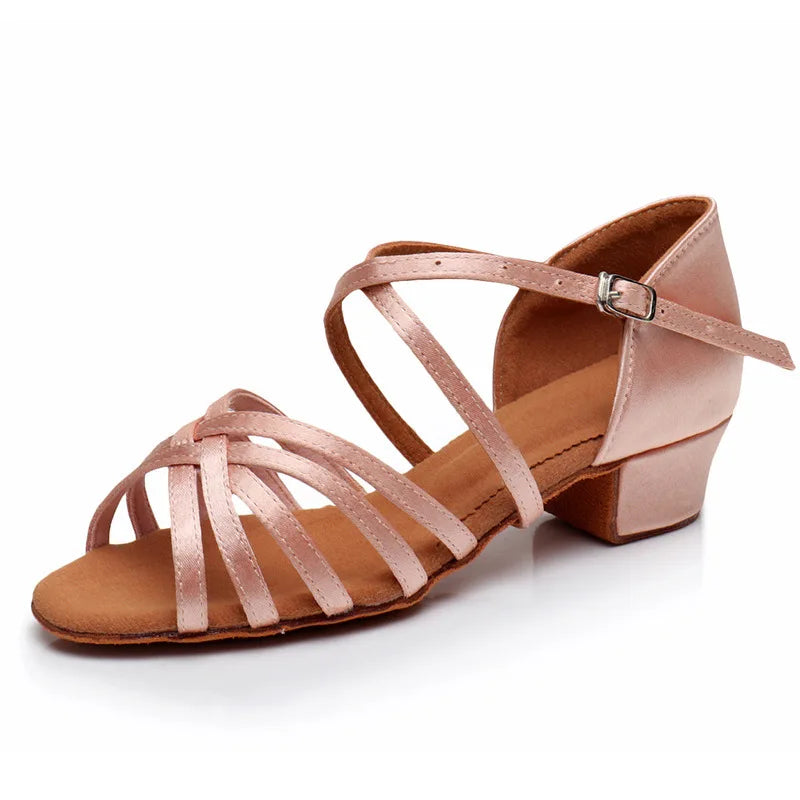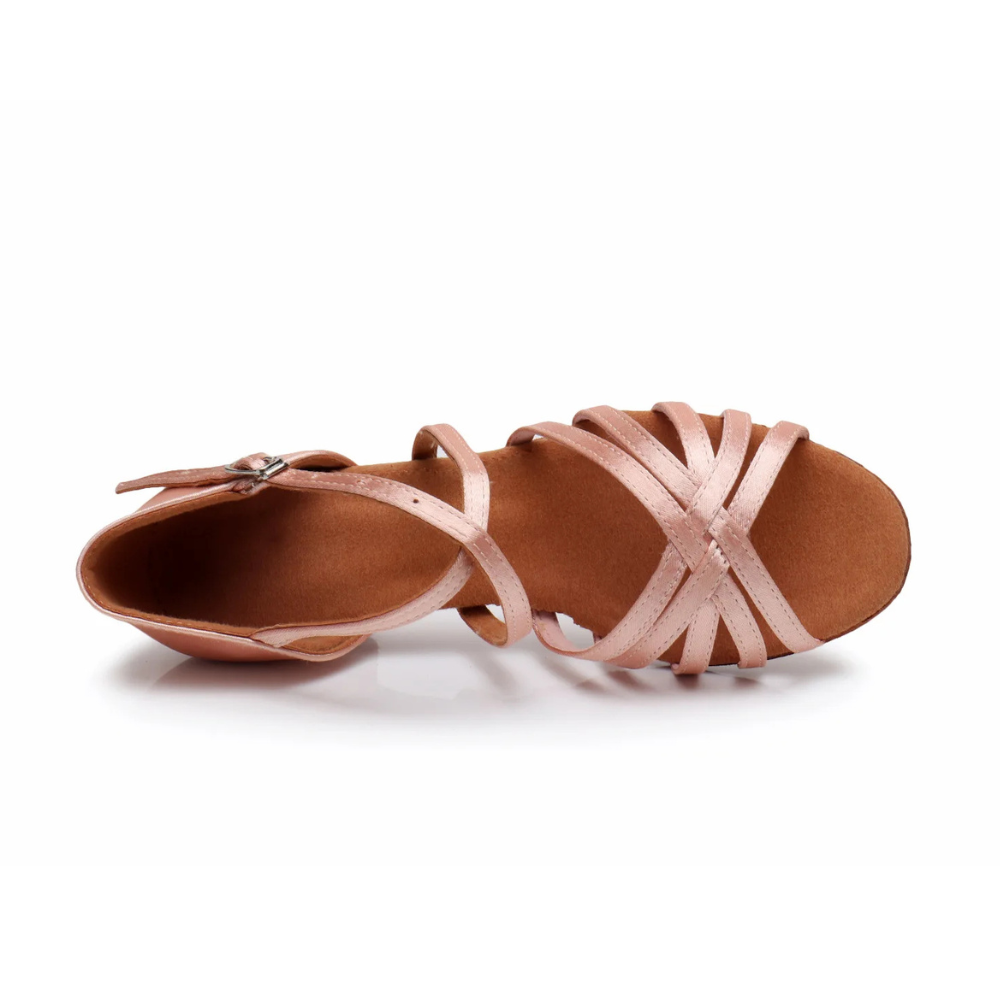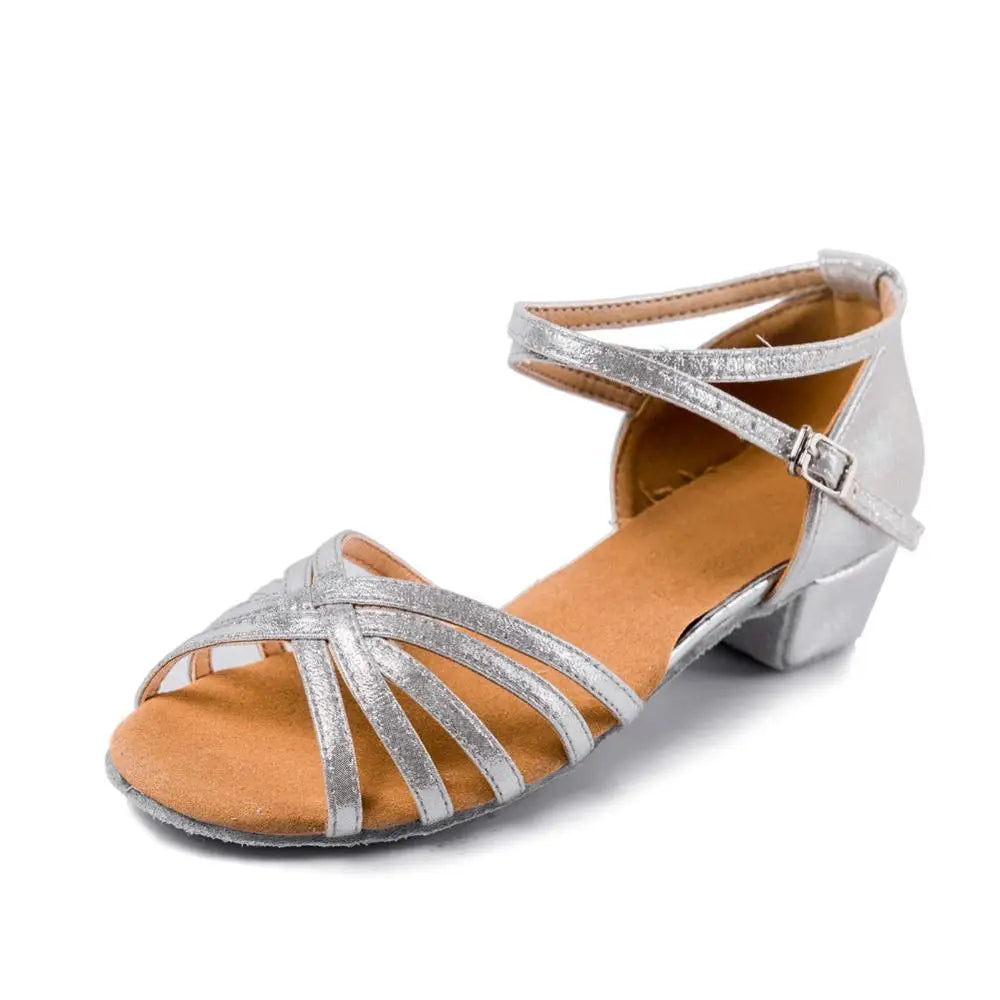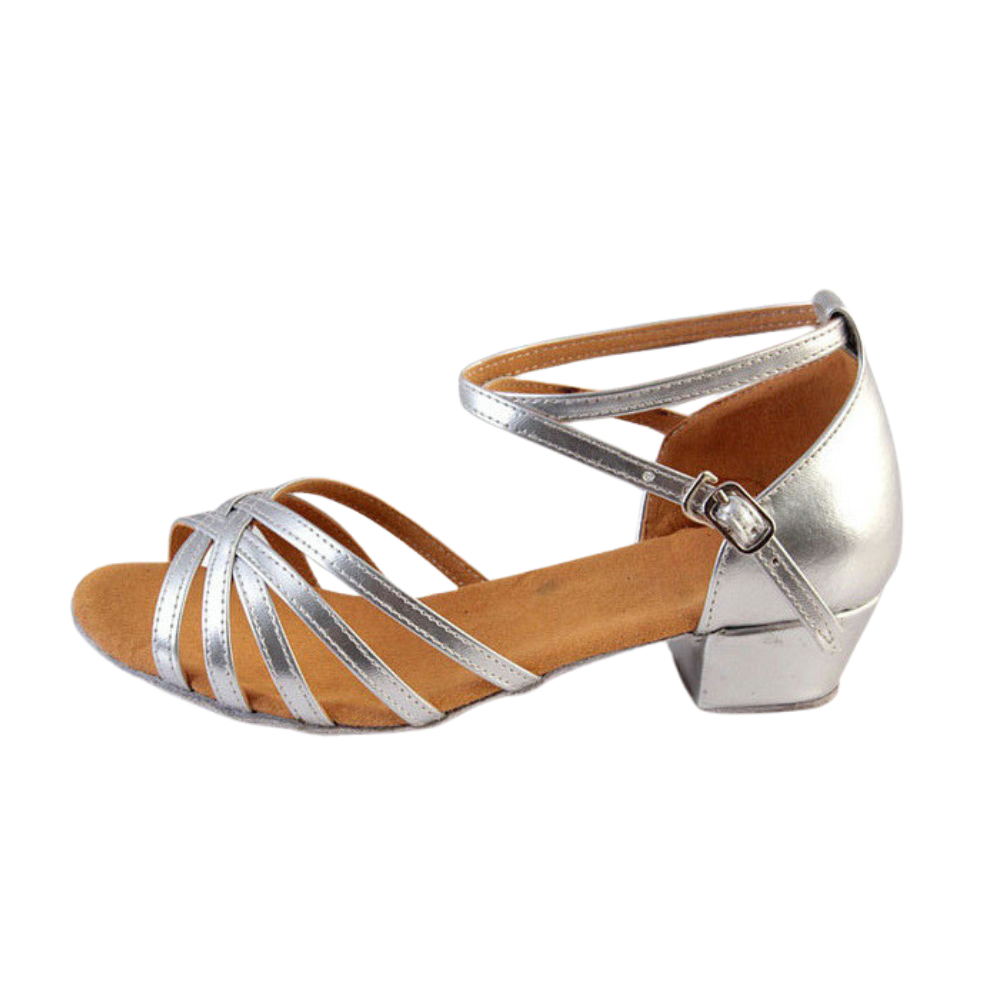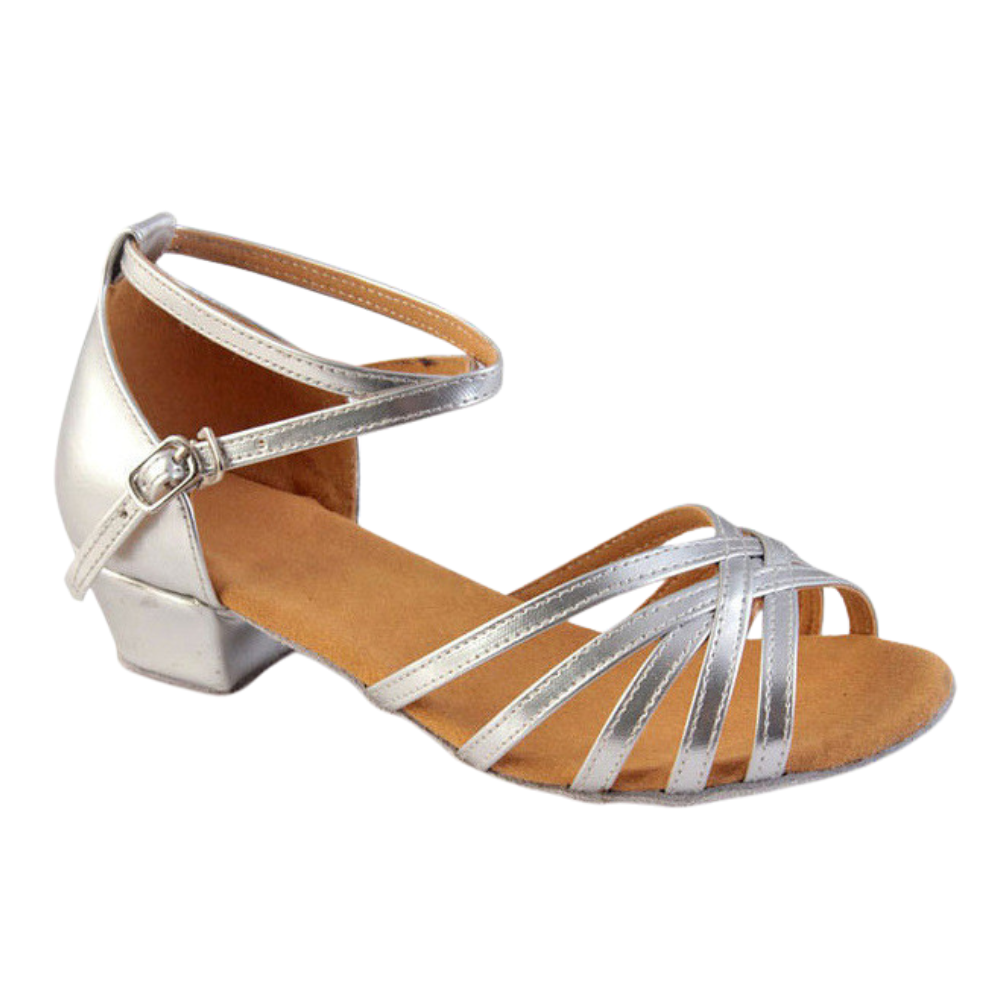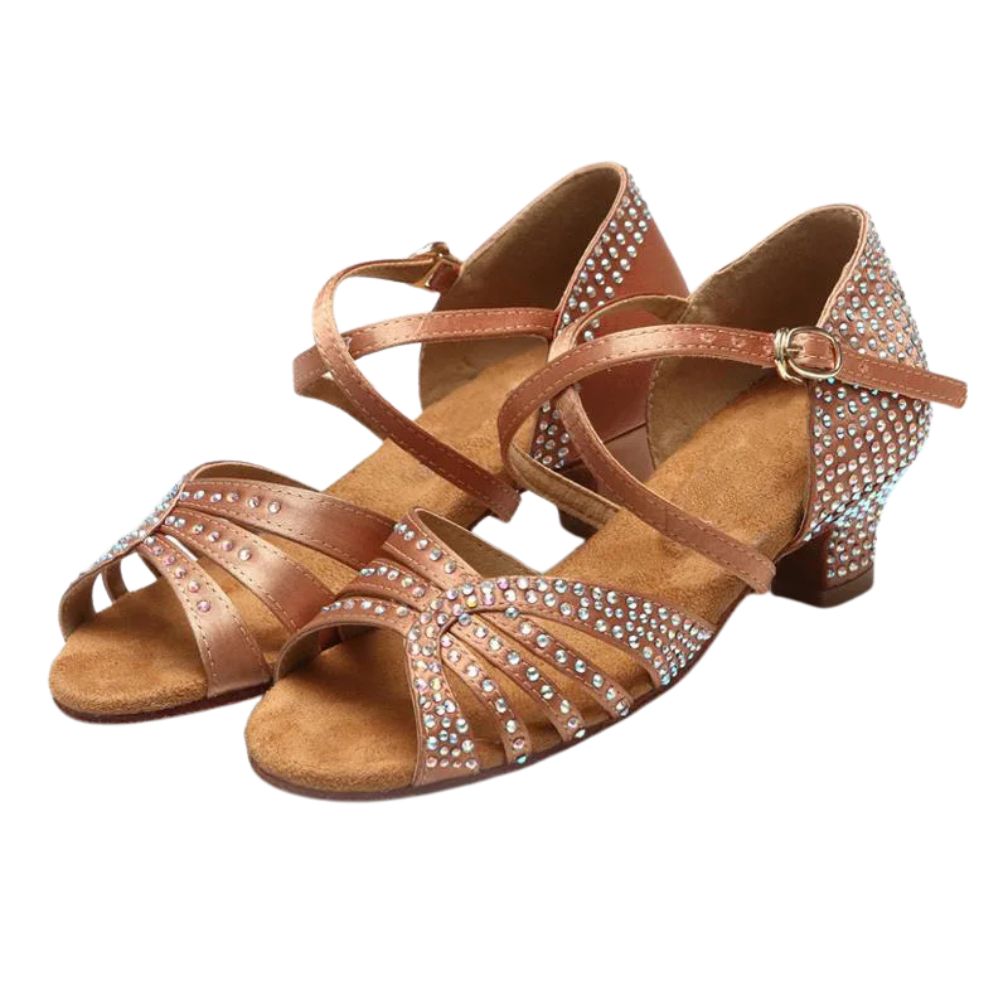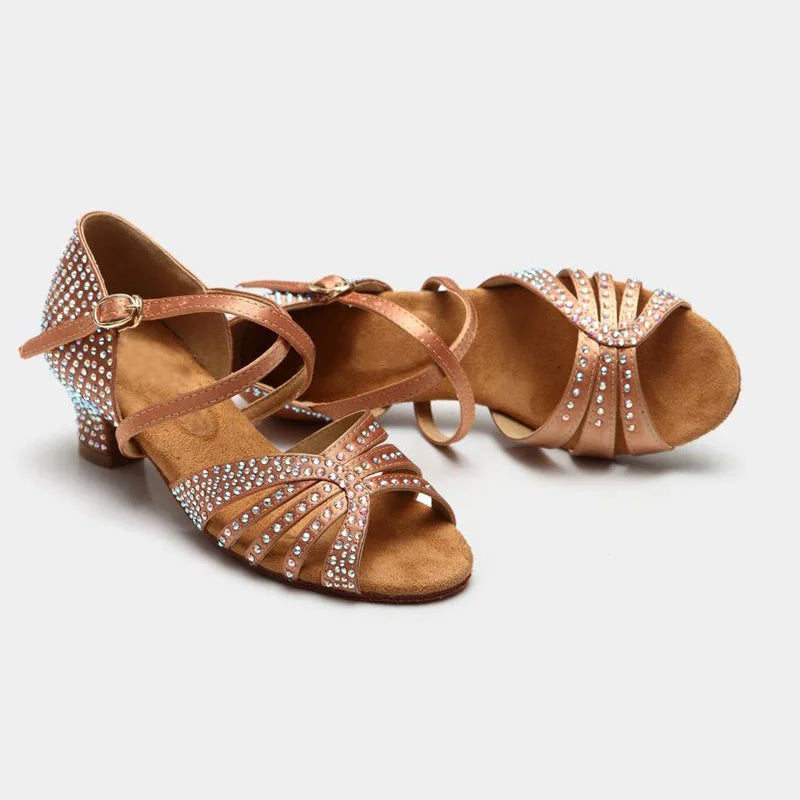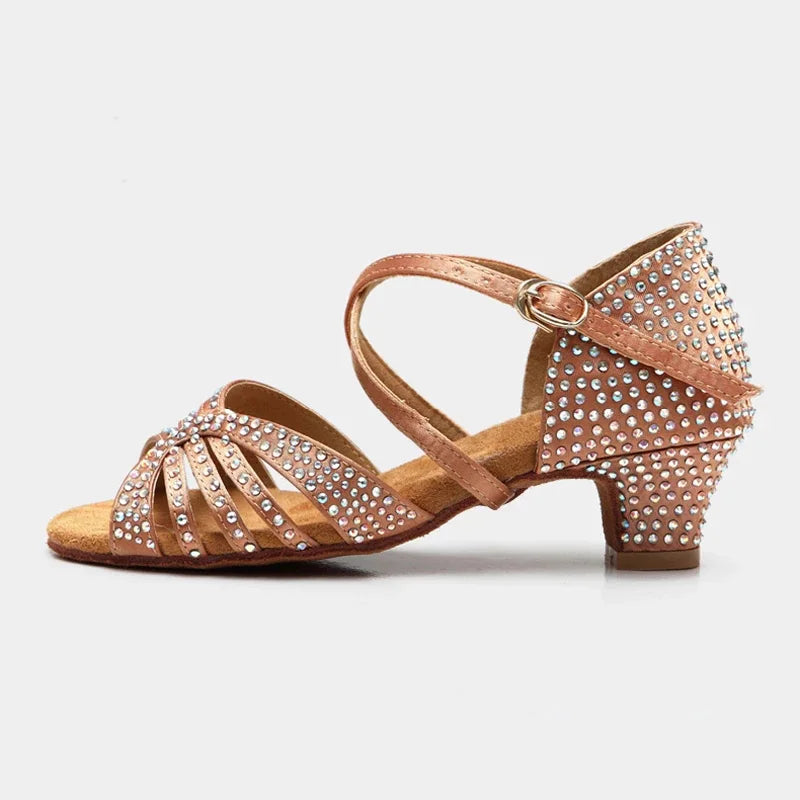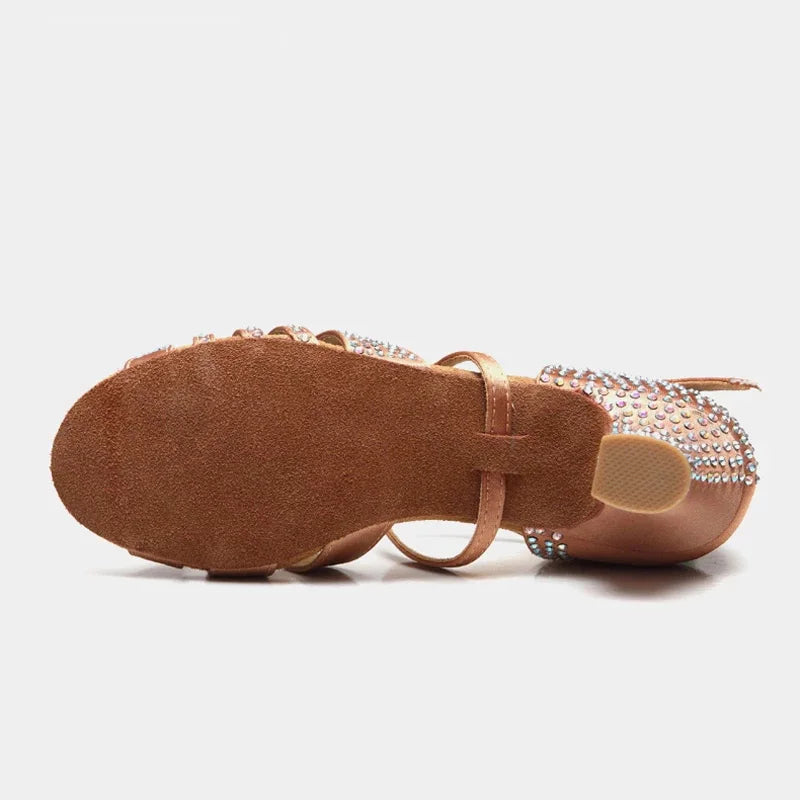Dance Heels
Learn More About Dance Heels
What Are Dance Heels?
Dance heels are specially designed shoes with elevated heels tailored for movement, rhythm, and style. Unlike everyday stilettos, these shoes combine elegance with function, offering enhanced support, flexibility, and grip to help you glide effortlessly across the dance floor.
Whether you're tangoing in T-strap heels or spinning in suede-soled sandals, dance heels are crafted to make dancing feel natural, beautiful, and pain-free. Perfect for Latin, ballroom, salsa, or even jazz performances, they’re the glamorous yet practical choice for dancers of all levels.
Related Collections
What Are the Different Types of Dance Heels Called?
In the world of dance, you'll find several styles of dance heels, each designed for specific moves and genres. Some of the most popular types include:
- Latin Heels: Sleek with flexible soles and high arches
- Character Heels: Chunky, stable heels often used in theatre or jazz
- Ballroom Heels: Supportive with suede soles for smooth motion
- Practice Heels: Lower heel height, great for training
- T-Strap or Ankle Strap Heels: Extra secure for fast turns
Each of these styles balances style and performance, offering structure without sacrificing flair.
What Is the Difference Between Dance Heels and Regular Heels?
Not all heels are created equal! Dance heels differ from regular fashion heels in several key ways:
- More cushioned insoles for long hours of movement
- Flexible soles (often suede) for smooth gliding
- Sturdier ankle support and straps for stability
- Designed to promote proper posture and foot alignment
- Lightweight construction to prevent fatigue
In essence, dance heels are made to move, while regular heels are made to pose. That’s why so many women switch to dance heels, even for everyday wear!
What Heels Are Good for Dancing?
Choosing the best heels for dancing depends on your level, style, and comfort. Here’s what to look for:
- A snug yet secure fit (but not painful!)
- Non-slip suede or rubber outsoles
- Flexible soles for foot articulation
- Cushioned padding and arch support
- Ankle or T-straps to keep your foot in place
If you’re new to dancing in heels, start with a lower heel, around 1.5" to 2.5", then work your way up. Our collection features everything from classic ballroom styles to more modern, sparkly showstoppers.
What Are the Easiest Heels to Dance In?
For beginners or long hours of practice, these styles are great:
- Low Cuban heels
- Block-heeled T-strap shoes
- Closed-toe character heels
- Low Latin dance heels with arch support
- Comfortable practice dance heels with padded insoles
These options offer both comfort and confidence, perfect for rehearsals or dance classes.
Why Do Some Dance Heels Have Open Toes?
You’ve probably noticed that many Latin dance heels and salsa shoes feature open toes. That’s not just a design choice, it’s a functional one!
- Helps dancers feel the floor with their toes
- Increases breathability and prevents overheating
- Gives a more elegant, elongated line to the foot
- Allows for greater toe flexibility and balance
Open-toe heels for dancing are particularly popular for Latin and rhythm styles that involve quick footwork and expressive toe movement.
Why Are Dance Heels More Comfortable Than Regular Heels?
It’s simple, dance heels are made for movement, not just for looks. Here’s what makes them feel like magic:
- Built-in arch support
- Flexible soles that follow your foot’s natural motion
- Lightweight materials that reduce pressure
- Soft linings that prevent blisters and irritation
- Secure ankle straps for a “locked-in” feel
Many women actually find comfortable dance heels more wearable than fashion heels for events and nights out. Your feet will thank you!
H2: Can You Wear Dance Heels Outside?
Technically, you can, but it’s not recommended unless your shoes are made for dual use. Most professional dance heels have suede soles, which can wear out quickly on concrete or asphalt. However:
- Some street-friendly dance heels have rubber outsoles
- Look for versatile dance shoes marked for both indoor and outdoor use
- Carry a second pair to switch before and after class or performance
Want that “just danced out of a dream” look on the street? Go for dance-inspired block heel sandals with grippy soles!
What Is a Cuban Heel in Dance Shoes?
The Cuban heel is a dance heel that’s short, square, and slightly flared. Originally popularized in Latin dance and men’s flamenco footwear, it’s now beloved in women’s styles for its comfort and stability.
- Height: Typically 1.5" to 2"
- Base: Wide and square for extra balance
- Best for: Salsa, bachata, beginners, or long sessions
If you’re looking for low heel dance shoes, Cuban heels are a timeless favorite—chic, sturdy, and ready to cha-cha.
Should Dance Heels Be Tight?
Great question! Your dance heels should feel snug but not painful. A good fit means:
- Your foot doesn’t slide forward or backward
- Your toes aren’t crunched or squished
- The heel cup holds your foot firmly
- No major gaps or heel slippage
Over time, suede or leather may stretch slightly, so aim for a “glove-like” feel. If you can wiggle but not slip, perfect!
Should Your Toes Be Squished in Heels?
Absolutely not! Squished toes lead to:
- Blisters
- Poor balance
- Numbness
- Long-term foot issues
Opt for open toe dance heels or rounded shapes to give your toes room to breathe. No matter how fierce the heel, comfort comes first.
How Long Do Dance Heels Last?
It depends on how often you use them! On average, a pair of quality dance heels can last:
- 6–12 months with regular practice
- 1–2 years for occasional use
- Longer if used only for performances
Look for signs like worn-out soles, decreased arch support, or loose straps to know when it’s time for a new pair. Proper care makes all the difference!
Do You Wear Socks with Dance Heels?
Generally, no, you usually go barefoot or wear dance tights or foot undies for added grip. That said:
- Thin socks can help break in new shoes
- Practice shoes may allow for cotton footies
- Compression socks work for swelling after long sessions
Always match your socks or stockings to the needs of your practice or performance. Avoid anything that bunches or slips!
Does Dancing in Heels Tone Your Legs?
Yes, girl! Dancing in heels activates:
- Calves
- Hamstrings
- Glutes
- Core
You’re not just slaying the dance floor, you’re sculpting at the same time. That’s why many dancers love toning heels or practice in heavier Latin heels to strengthen their lower body.
Does Dancing in Heels Hurt?
It shouldn’t, if you have the right pair! Pain while dancing often means:
- Ill-fitting shoes
- Too high a heel
- Poor arch support
- Worn-out soles
Invest in comfortable dancing heels with padding and ankle support, and always warm up before dancing. Your feet do a lot, give them love!
How Do Dancers Not Slip in Heels?
Simple: suede soles and technique! Most professional dance heels have:
- Suede outsoles for controlled spins
- Non-slip heel caps
- Foot straps for stability
Plus, experienced dancers develop strong posture, weight control, and balance techniques. Still nervous? Try:
- Dance floor rosin
- Spray-on grip solutions
- Grip pads under the ball of the foot
Confidence comes with comfort and practice, our shoes help with both!
Shop the Best Dance Heels for Your Style
Whatever your rhythm, we’ve got the perfect heel for you. Explore styles designed for:
- Salsa, Bachata & Latin Nights
- Ballroom Competitions
- Jazz or Musical Theatre
- Dance Classes & Training
- Special Occasions and Weddings
Ready to dance like everyone’s watching? Our collection of stylish, comfortable dance heels is here to boost your confidence, elevate your look, and support every single step.
About Us
At OhMyHeels, we believe heels empower confidence and style. Founded by Patricia, our mission is to help every woman find the perfect pair to shine with every step
